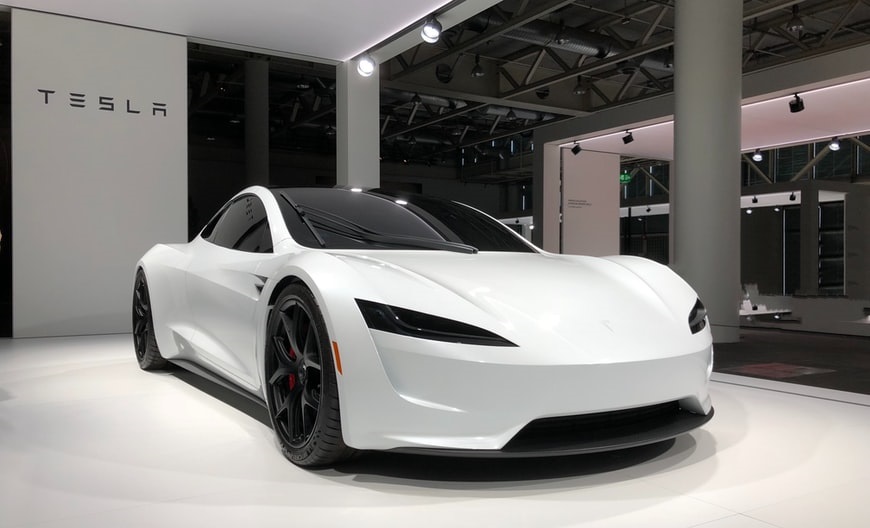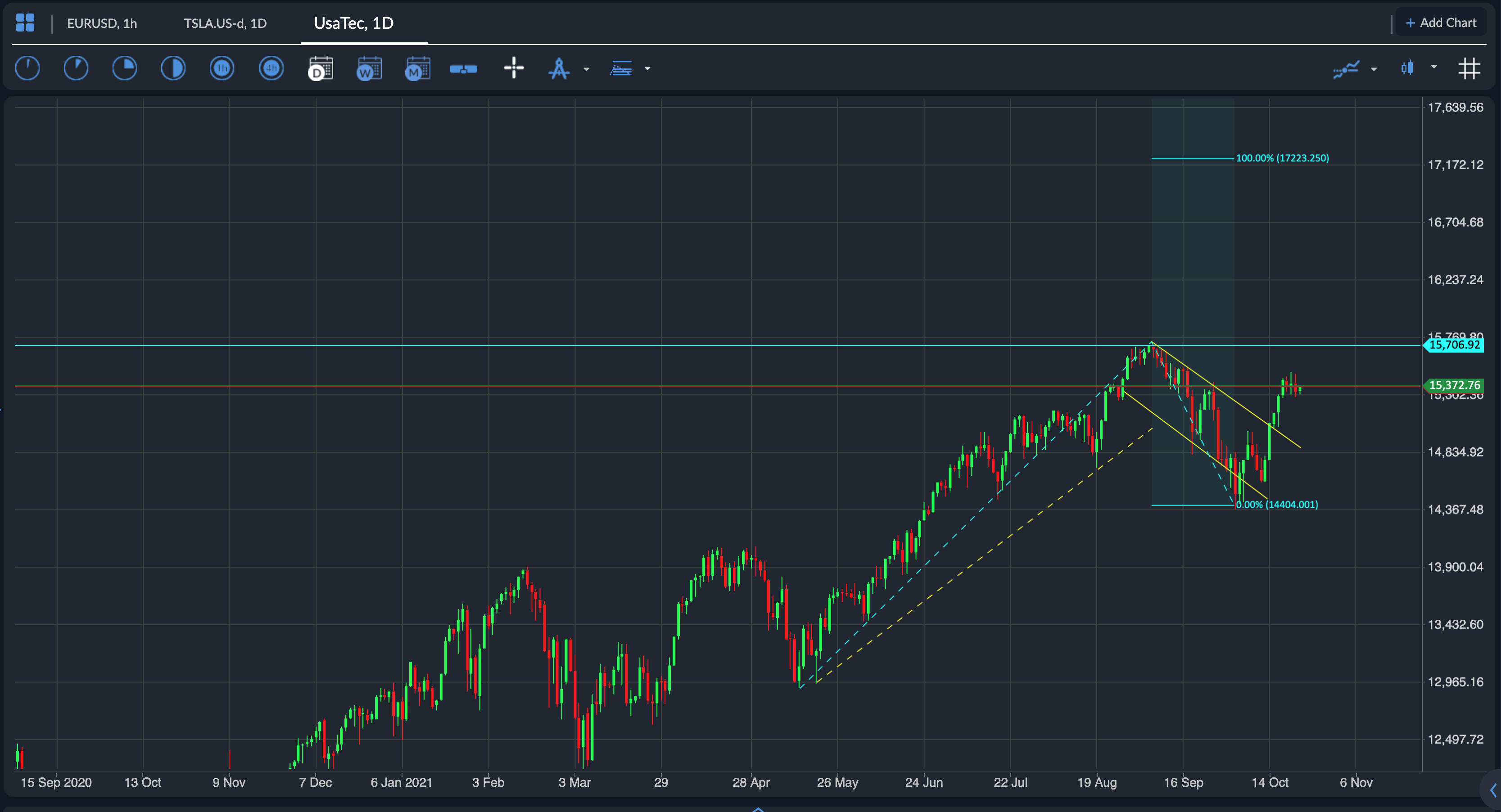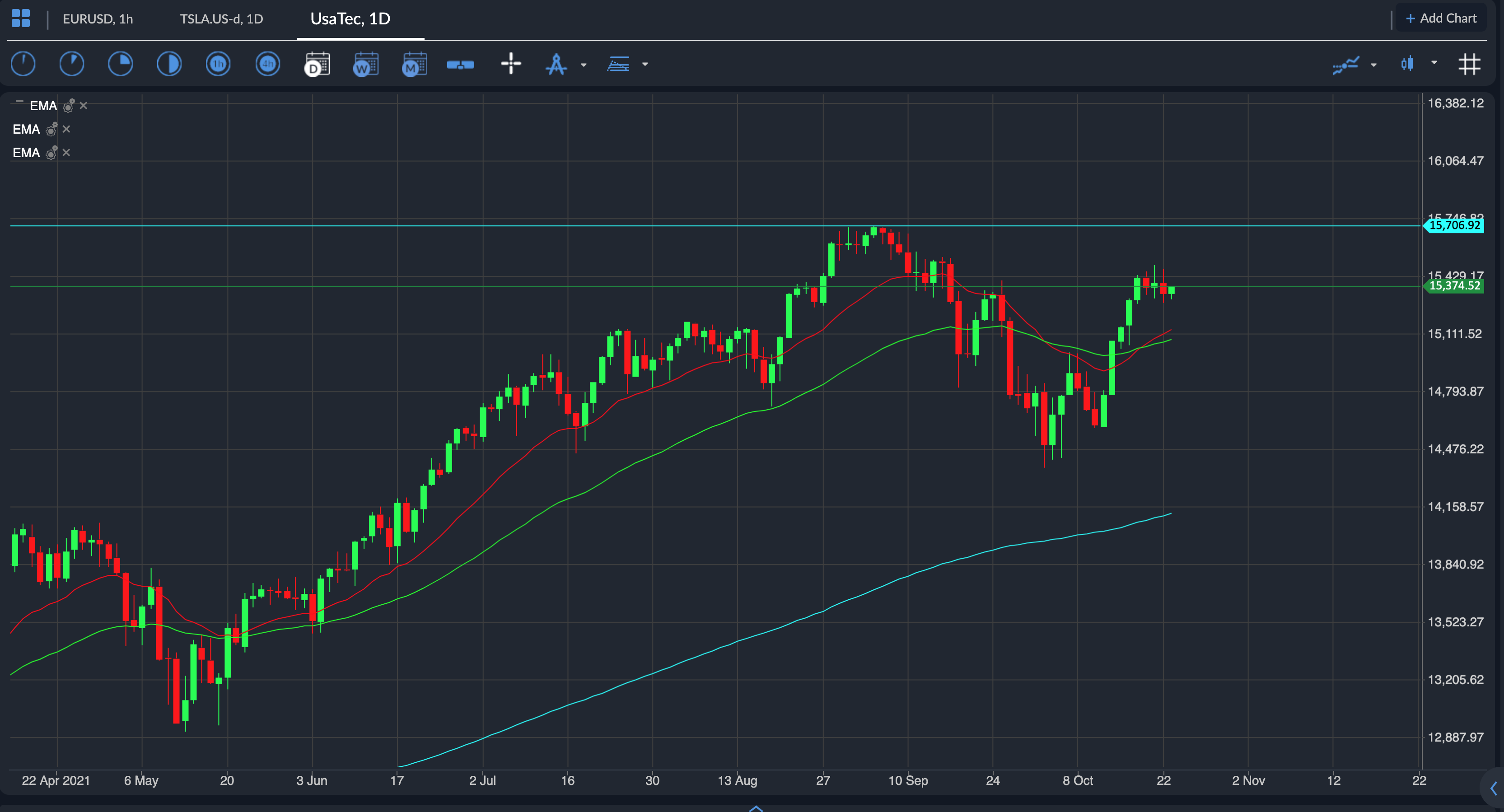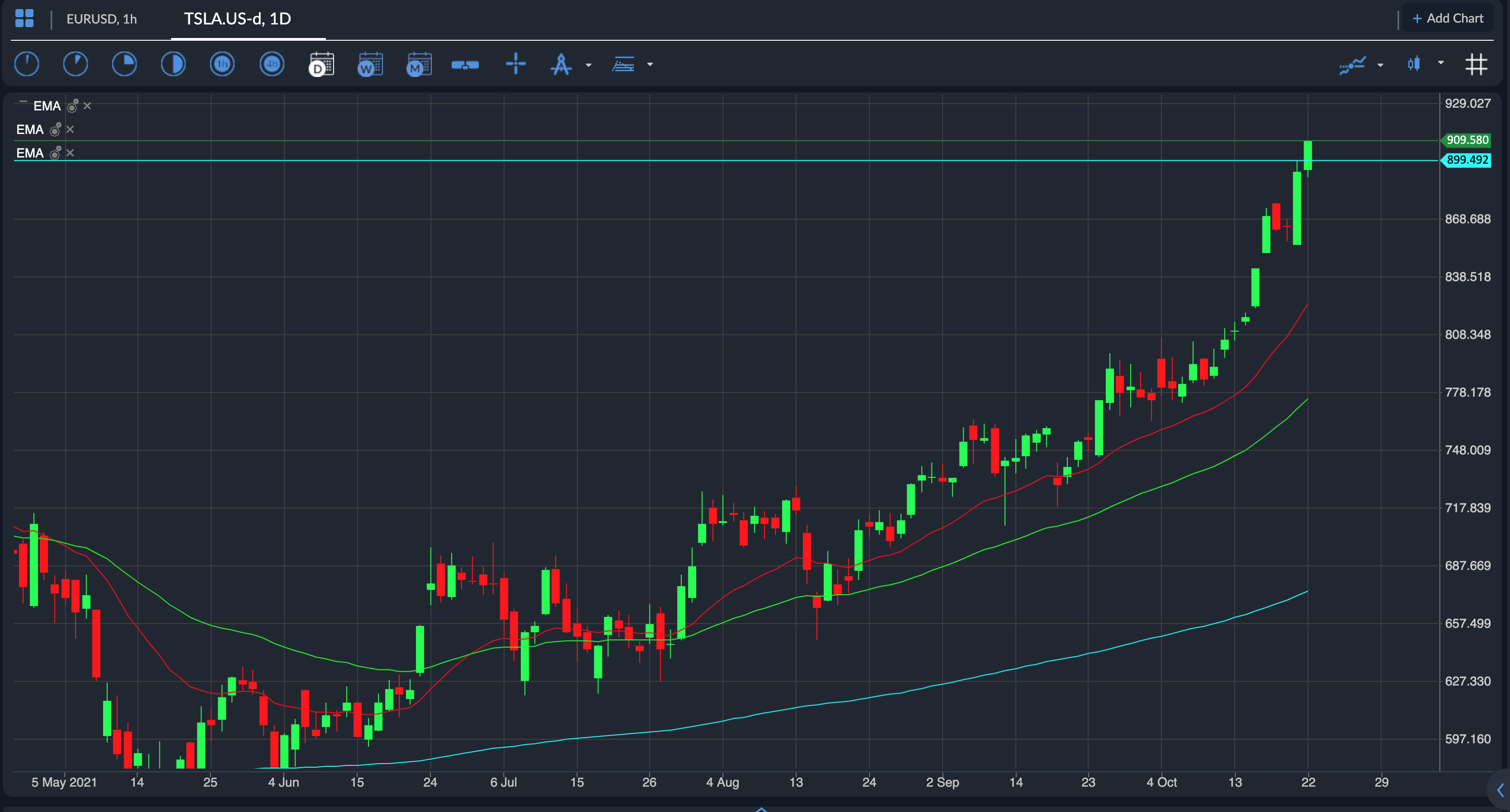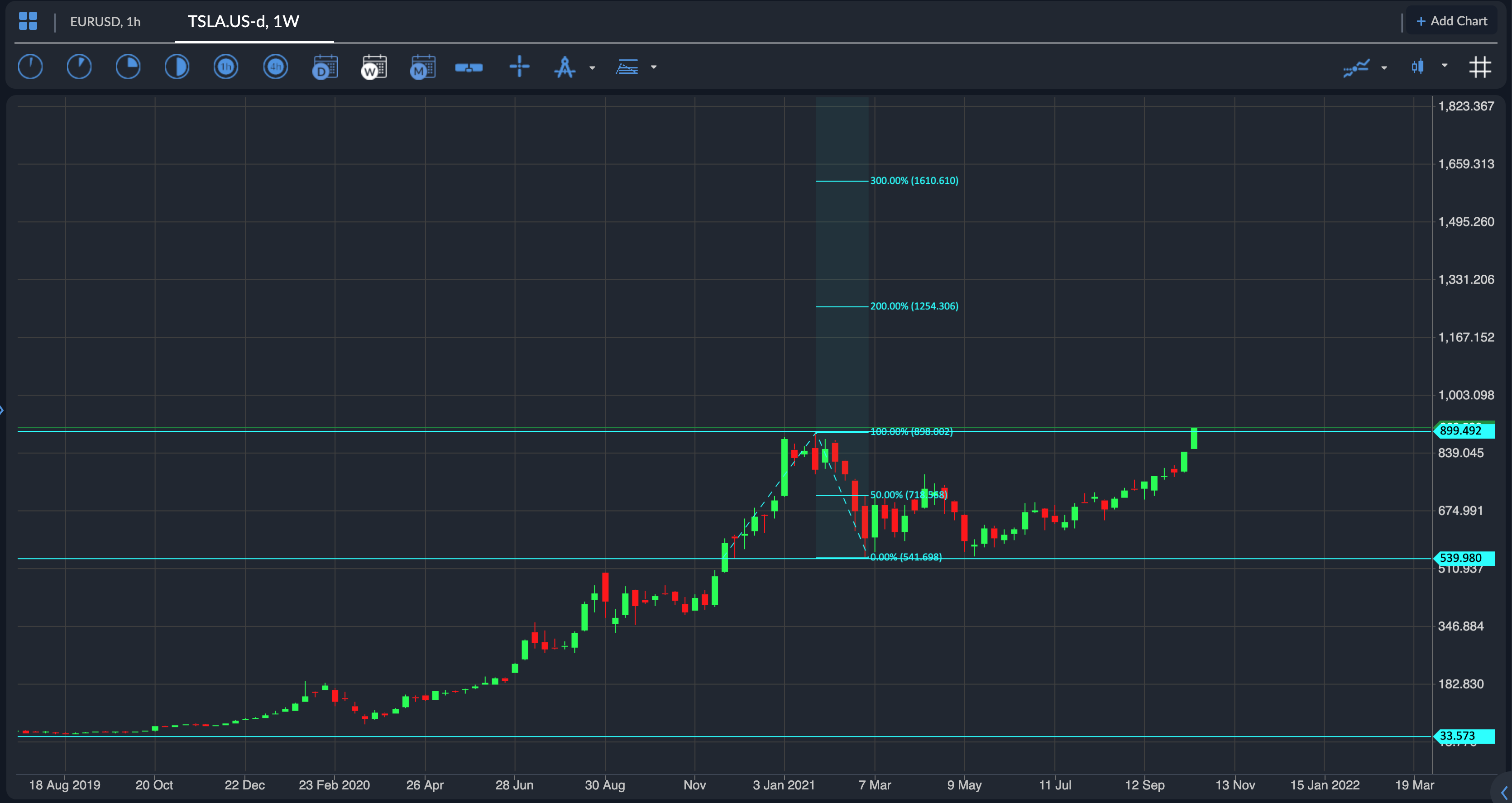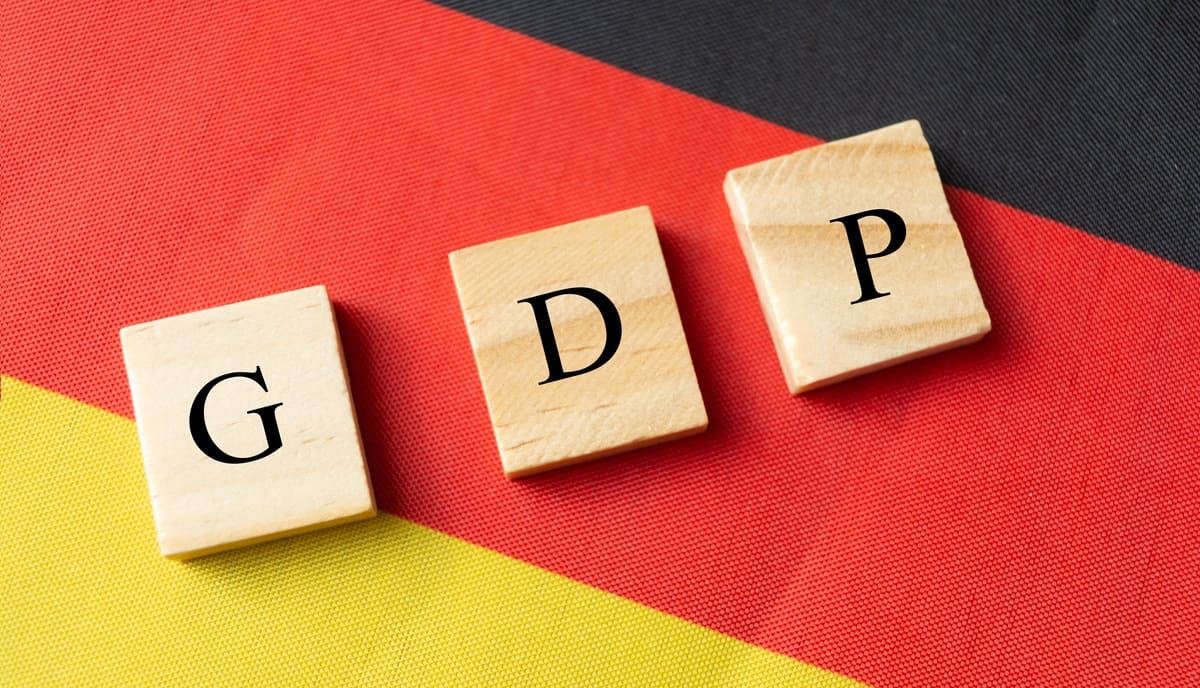Tesla Weekly Investment Idea
I like the way Cathie Wood trades, she appears to have great market timing and buys companies as their share price goes lower and sells those stocks which are making great gains, to book profits. Cathie Wood’s Ark Invest bought 230,323 shares estimated to be worth $12.7 million in Snap Inc. in one of those buy-on dip trades. Snap’s third-quarter revenue missed analysts’ estimates on Thursday. This week we get Facebook Inc. and Twitter Inc., earnings reports so it will be interesting to see what trades Ark does around those companies.
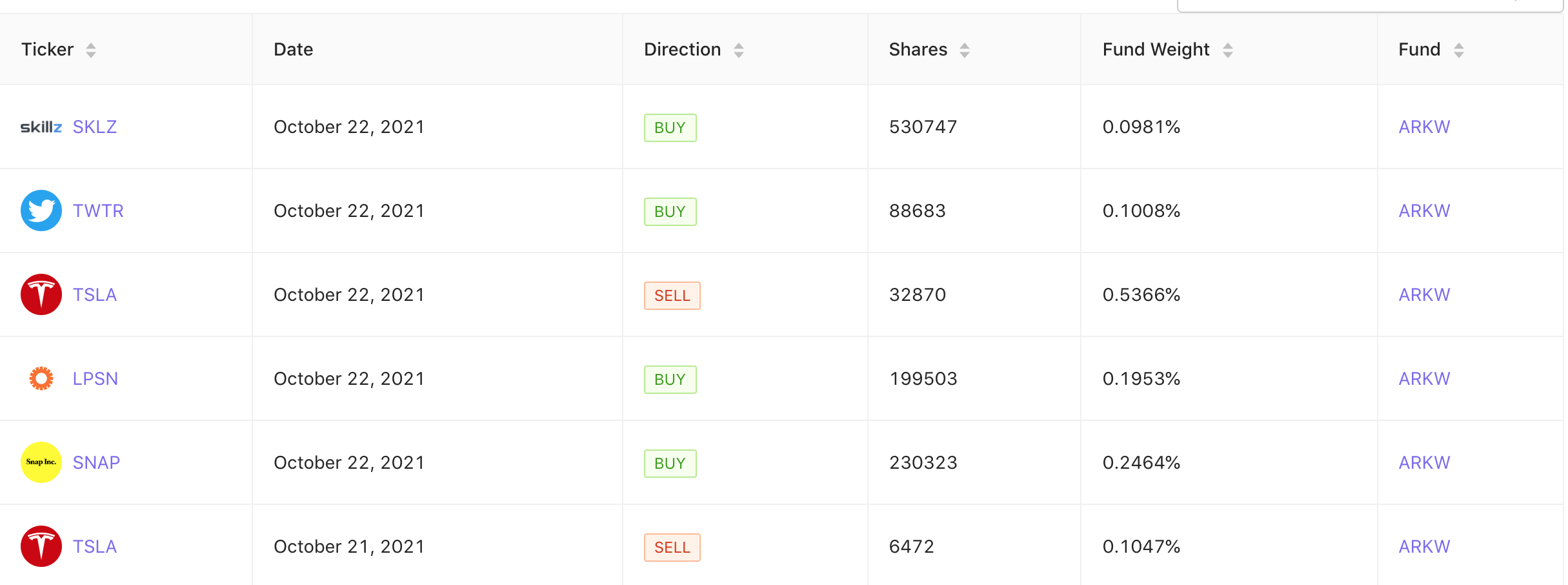

The ARKQ fund is an actively managed ETF that seeks long-term growth of capital by investing under normal circumstances primarily (at least 80% of its assets) in domestic and foreign equity securities of autonomous technology and robotics companies that are relevant to the Fund’s investment theme. Autonomous technology and robotics companies are companies that the Adviser believes are expected to focus on, among other things, disruptive innovation in automation and manufacturing, transportation, energy, artificial intelligence, and materials.
Last week, Ark also sold 80,354 Tesla shares, estimated to be worth $73.09 million. Tesla’s shares closed Friday at $909.68, up 1.75%.
See real-time quotes provided by our partner.
See real-time quotes provided by our partner.
Despite a downturn in broader tech stocks, Tesla (TSLA) hit a record high on Friday as investors continue to buy into the carmaker’s record third-quarter earnings. So, although I respect what Cathie Wood has achieved with her strategy, I am going to recommend never selling a Tesla share while the richest man in the world is still pushing forwards with his EV vision and some of the largest asset managers not only accumulate but are long term holders of the stock. You just don’t go against these types of investors. Looking at the chart of the Nasdaq, we could also be seeing a continuation higher to surpass the all-time highs after a breakout of a bull flag. The bull flag technical pattern is a well-known bullish continuation trade and so obvious on a chart it generally becomes a self-fulfilling prophecy.
Despite a variety of challenges, including semiconductor shortages, congestion at ports, and rolling blackouts, Tesla posted revenues of $13.7 billion and profit margins of 30.5% for the three months ending in September, the strongest growth rates in the company’s history. Recent figures follow another all-time high in third-quarter deliveries, which rose 73.2% from last year to 241,300 units.
With sales of nearly 421,000 electric vehicles in the first half of 2021, Tesla is already the world’s best-selling electric vehicle manufacturer, with a market share of about 15%, with Volkswagen Group and General Motors following closely behind. Tesla are now within touching distance of Tesla’s target of 250K deliveries per quarter, which will see Tesla become the first EV company to sell a million units in one year.
As a warning in their forward guidance, increasing input costs and labour shortages, along with plans to open new factories in Germany and Texas, will impact margins going forward, but the group’s ability to defy the global semiconductor shortage, while weaning itself from carbon credit sales, has been key to their continued success.
In a statement, Tesla said that “EV demand continues to undergo a structural shift. We believe the more Tesla owners there are, the more they can spread the word about EVs”. Tesla also announced in its latest investor presentation that it is switching from nickel cobalt aluminium (NCA) to an alternative, older technology known as lithium iron phosphate (LFP).
Unlike NCA and nickel manganese cobalt (NMC) cells, LFP cells have a much longer useful lifetime and are also cheaper. One of the biggest disadvantages is that LFP batteries have a lower energy density. Even so, LFP batteries can compensate for this shortcoming by drastically reducing thermal runaway in the event of a crash. This means that LFP battery packs require much less space for cooling and structural protection.
CEO Elon Musk has revealed that the improving energy density of LFP batteries now makes it possible to use the cheaper, cobalt-free batteries in its lower-end vehicles to free up more battery supply of lithium-ion chemistry cells for Tesla’s other models.
The $100 per kWh battery cost price point is generally regarded by the EV industry as crucial for the broad adoption of electric vehicles because it makes them cost-competitive at sticker price, which is an important psychological barrier for many consumers. Most of the cost of an EV is accounted for by its powertrain. Tesla’s LFP switch not only improves margins but can also expedite the company’s progress toward $100 per kWh.
See real-time quotes provided by our partner.
The daily chart shows how fast the share price is rising, with the daily 20, 50 and 200 ema’s all bending upwards and the relative prices since mid-September trading away from the 20 ema. Buying the dip like Cathie Wood’s Ark would be something like when the price tagged the daily 50 ema back in August after a breakout of the previous consolidation. Now, there is very little structure to class as a consolidation, so it is basically buying new highs and assuming that the day ends green, with a stop loss under the nearest red candles low to mitigate risk. Either that or be patient and wait for a meaningful test of lower prices as traders look for where value is.
See real-time quotes provided by our partner.
The Tesla monthly chart shows how far things could go, especially if Tesla hits the 1 million units per year target. The 2021 corrective trading range has been broken so a measured move higher is the most obvious trade as it is the path of least resistance. That would take the price target up above $1250 which is where some analysts are now predicting for their targets. Morgan Stanley sees at least 30% upside. When you get news come across your screen that Hertz is buying 100,000 Tesla’s, that is disruptive for the car-rental market and is great for EV’s in general.
